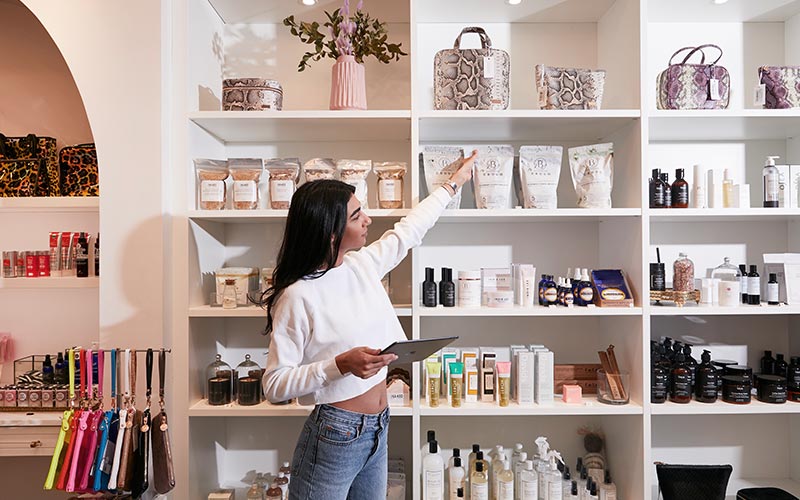

There are many different types of retail businesses, each with their own unique operational and security requirements. Regardless of whether you’re a small business owner running a family business or a manager responsible for overseeing the operations of a large retail clothing store, you’ll need to keep daily operations running smoothly.
Establishing opening and closing procedures that leave as little to chance as possible can really help. Handled correctly, these two key periods of your day will leave you free to deal with the urgent details that tend to come up for most retailers. They also allow your employees to focus on what’s most important: taking care of your customers.
This daily checklist will help you keep your operations running smoothly, ensure the health and safety of your staff and allow you to give your shoppers the best possible customer service.
Finding the right employees can make or break your retail store. Learn the best practices for recruiting employees and keeping them around in our free guide.
A retail store opening and closing checklist is a set of tasks and procedures that need to be completed at the beginning and end of each day to ensure the store operates smoothly, efficiently, and securely. These checklists are crucial for helping your team (and business as a whole) maintain consistency in their operations and provide a positive customer experience.
Opening and closing times are considered high-risk periods for robberies . At the same time, most breaking and entering crimes naturally occur while businesses are empty.
To avoid walking into a bad situation, you should inspect all windows and doors when you first arrive. If you find any signs that locks or alarm systems have been tampered with, contact local authorities before entering the building.
To avoid placing yourself and your employees at undue risk, neither you nor any employee should ever open the store alone. One person should always be observing the local surroundings for any suspicious behavior or conditions, like unfamiliar cars in the parking lot.
If your security system is equipped with a panic code or dress code, be sure anyone who may be opening the store is as familiar with the arm and disarm codes. Practice using this code so it stays fresh in everyone’s minds.
Once you are inside the store, doors should never be left unlocked before you open for business. If necessary, post an employee at the door to let in other employees or possible suppliers and distributors. Make sure the door is relocked after each person leaves, especially if you’re in the process of transporting cash or depositing cash into your register or point of sale system’s cash drawer.
Consider establishing an “all clear” signal, such as a window blind set in a particular position or sign turned a certain way, that will alert staff members if there is a problem in the store.
Once you are safely in the building and sure all is secure, it’s time for you and your employees to get ready to go about your day.
When first entering the building, lights should be turned on and a general inspection of the premises should be made. You should also look for any undiscovered issues in your store while assuring that closing staff members completed all procedures properly and making note of any discrepancies.
Wet spots on floors, ceilings or along walls could be a sign that you have HVAC, roofing or plumbing problems . This is also the best time to make sure that all of your in-store signage is up to date and that any stocking issues or housekeeping issues are corrected.
Once you’re sure all is well with your store, it’s time to turn on the cash registers or boot up the computers and retail POS systems . Turn on any televisions or sound systems that you use and set your cash drawers for the morning’s business. The last is a task that should always be observed by at least two people, just for the sake of peace of mind and security.

Now that we’ve covered the fundamentals of what a retail opening procedure looks like, here is a sample that you can tailor to your store.
Just as your opening checklist sets the tone for your business day, your closing checklist will greatly influence how the next morning will go. Details overlooked at closing time create more work for your opening crew and can influence how the first customers of the day are served.
It’s never a good idea to rush customers out the door, but in any business, there is a closing time. It’s appropriate to make an announcement at a proper time (say, 15 minutes before closing) to warn clients that the store will be closing soon. It’s also reasonable to lock the doors and station a member of your staff to allow customers to exit only. This prevents a constant stream of business from trickling in.
Never assume because no one is visible that your store is empty. Your nightly checklist should include provisions for a visual inspection of all areas including restrooms, stockrooms and closets. This will help prevent robberies from someone hiding away.
Customers and browsing shoppers don’t always put products back where they belong or in a neat manner. Waiting for the last customers to exit the building is the ideal time for your staff to start straightening up and reorganizing misplaced items.
To prevent the spread of harmful germs and to ensure a safe shopping experience for your customers, your store should be cleaned as thoroughly as possible at the end of the day. Additionally, your shelves should be stocked appropriately. A cloud POS system can tell you how much of each item you have on hand.
This is a job that should be reserved for or at least overseen by management personnel. In some cases, you might also trust a long-tenured cashier with this task. Lay out a specific time for counting cash and closing each cash drawer in your retail store. If you use more than one register or POS system, you can start closing them, but always wait on the final one until after the last customer exits the building.
The exact procedure you use to count down your drawers and reconcile your sales for the day will greatly depend on the type and size of business you have, but it should be systematic, with each step clearly defined. This makes it possible to more easily train new personnel to your standard operating procedure (SOP) and helps assure that no oversights occur.
As an owner/manager, it is your responsibility to make sure that all the tasks required to properly close your store are completed before heading out. At the end of each night, you should do a full walkthrough of the building before the lights are turned out. You should check the status of key tasks and correct any discrepancies you find.
Are you and your team done selling for the day? Here’s a quick bullet list of things to do before closing up your retail store.
Just as no one should open a store alone, the final lockup and setting of the alarm should be a team effort. There is no such thing as being too safety conscious.
Creating a retail store opening and closing checklist enables you to reap a number of benefits, including:
It takes time and a thorough eye to develop opening and closing procedures, and it’s wise to consider them living documents. While it requires a decent investment of time and energy, this commitment to task management is worth the effort in the long run.
Having a set of checklists that breakdown and cover all major activities from the time you pull into the parking lot creates accountability both for you and your employees. At the same time, they make oversight a much easier process.
If you want to streamline your operations even further, we can help. Chat with one of our experts to see how Lightspeed can keep a close watch on your retail store.